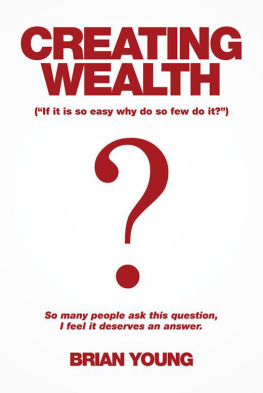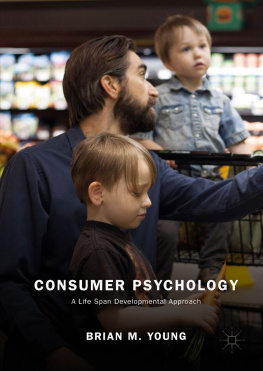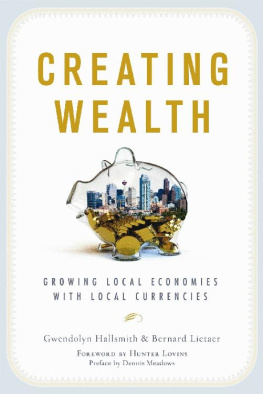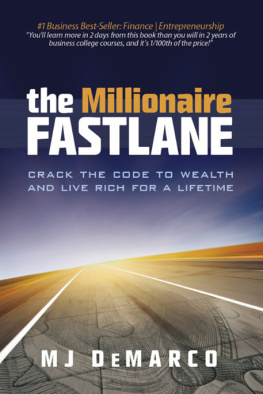Creating Wealth
If It Is so Easy Why Do so Few Do It?
Brian Young
Copyright 2016 by Brian Young.
ISBN: Softcover 978-1-5144-4662-1
eBook 978-1-5144-4661-4
All rights reserved. No part of this book may be reproduced or transmitted in any form or by any means, electronic or mechanical, including photocopying, recording, or by any information storage and retrieval system, without permission in writing from the copyright owner.
Any people depicted in stock imagery provided by Thinkstock are models, and such images are being used for illustrative purposes only.
Certain stock imagery Thinkstock.
Rev. date: 03/02/2016
Xlibris
1-800-455-039
www.Xlibris.com.au
735957
Contents
Brian graduated as a member of the Australian Institute of Professional Counselling in 1995.
He felt the need at that time to try and understand why his life was in such a sha mble.
This was the start of an amazing journey which eventually led to a fairly large property portfolio and ventures into other not-so-profitable areas of invest ment.
Brian says, The thing that intrigues me is the number of people that really wants to break away from their old life, build a future for themselves, but find it difficult to take those first steps needed to change things. Of course, when I look back, I realise I had had the same problem. It just seems so ridiculous now.
Creating Wealth (If it is so easywhy do so few do it?) So many people ask this question I feel it deserves an an swer.
We hope that this book explains the physiological reasons why people struggle to move on. Of course, this is impossible unless some action is taken towards creating a better life.
Many struggle to see opportunities when in fact they are surrounded by them.
Why is this? This book sets out with the hope of helping people sort out what is anchoring them to where they are now. We hope they would adopt ideas which will empower them towards better health, wealth, and happi ness.
CHAPTER 1
A Reality Check
Take any group of 100 people at their twenty-first birthday and follow them for forty-four years until they reach retirement age and heres what youll find, according to the Social Security Administra tion:

- Only one will be wea lthy.
- Four will be financially se cure.
- Five will continue working, not because they want to but because they hav e to.
- Thirty-six will be dead.
- Fifty-four will be dead brokedependent on Social Security Checks, relatives, friends, and even charity for a minimum standard of li ving.

Financially, this means 5 per cent will be successful, 95 per cent unsucces sful.
This is no reflection on anyone or anything, it is just a fact. It is a choice we subconsciously make at an early age. I say subconsciously because I have never met anyone when asked which bracket they would like to be in, say, Well, I think I would prefer to be unsuccessful. They are conscious of their words as they know nobody wants to be unsuccessful, but subconsciously (without thought), they make decisions which ensure they fall in to the financially unsuccessful 95 per cent. Make note this does not mean they are or will be unsuccessful in all aspects of their life far from it. Many couples have very successful relationships and have built their lives on a very basic income. Others have been extremely successful in building healthy lifestyles and living in mental and physical harmony. (This in itself of course is one of the key factors in wealth creation.) Others live extremely successful and meaningful spiritual l ives.
More often than not, we find people who are successfully content in areas other than finance never find themselves short of money. They naturally manifest suffice for their n eeds.

So why and how do we di ffer?
Professionals suggest that the blueprint for our financial future is drawn up at a very early age. The latest scientific studies even suggests the programming may start as early as conception. It is a well-known fact until we are 7 to 8 years of age, when our mind is in a state which is very open to hypnotic sugges tion.
At this age, we believe the things we are told and these are stored in the subconscious portion of our brain. Our memory files if you like. Our interpretation or perception of things we see, hear, feel, taste, or smell is embedded here for life unless at some time in the future, we make a conscious effort to change it. For instance, a young child may see or hear a parents negative thoughts about eating vegetables. They have the thought in their subconscious; vegetables are not nice so they wont even taste them. I asked a teenager at a party a few weeks ago who had commented that he did not like vegetables. I asked, Have you ever tasted them? He looked a little puzzled and replied, No. I asked, If you havent tasted them, how do you know you dont like them? He shrugged and said, I just know. I could have explained to him why he thought he knew but like many other people, he was chained to beliefs he had implanted in his subconscious many years ago. These are the thoughts which paint the picture of our world; the world as we se e it.
At this early age, our parents thoughts on investing, work, relationships, parental roles, government, and schooling are all implanted in our subconsc ious.
If our parents are in business, are blue-collar workers, or on welfare, we perceive this to be normal. In other words, we believe this is how things should be. Therefore, anything else becomes abnormal. The major part of our brain records the words and actions which relate to different aspects of our lives. As we slowly mature, we feel comfortable adhering to these thoughts, ideals, or beliefs, or whatever you choose to call them.
Consequently, we tend to hang out with people who have similar beliefs. We all reinforce each other, convincing ourselves we are the smart onesthe rest just dont ge t it.
Again, birds of a fea ther.
Each group sets up their own empowering beliefs to support themselves. For example, Welfare recipients may see others as slaves to their job, or to their boss, and so on; they may feel that others lack the intelligence to understand that they are working for money to pay for their welfare while they stay at home.

Workers may see Welfare recipients as bludgers, management as slave drivers, up themselves, crawlers, and brown-n oses.
Management may see Welfare recipients as scum, lazy, good-for-nothings, and workers as slaves. Each group has sayings to belittle the other group in order to empower themse lves.

These beliefs are ingrained in our subconscious from an early age, making it hard to move or change our mind set, which would help us change our lifestyle from one area to another. For example, a company manager may decide he has had enough of work and decides to go on to welfare or vice versa. In each case, their vision or beliefs embedded in their subconscious concerning the person they wish to change to will make them feel uncomfortable. Of course, all beliefs are like a double-edged sword. They empower you to stay where you are but they disempower you if you wish to change from one group to ano ther.
Next page














